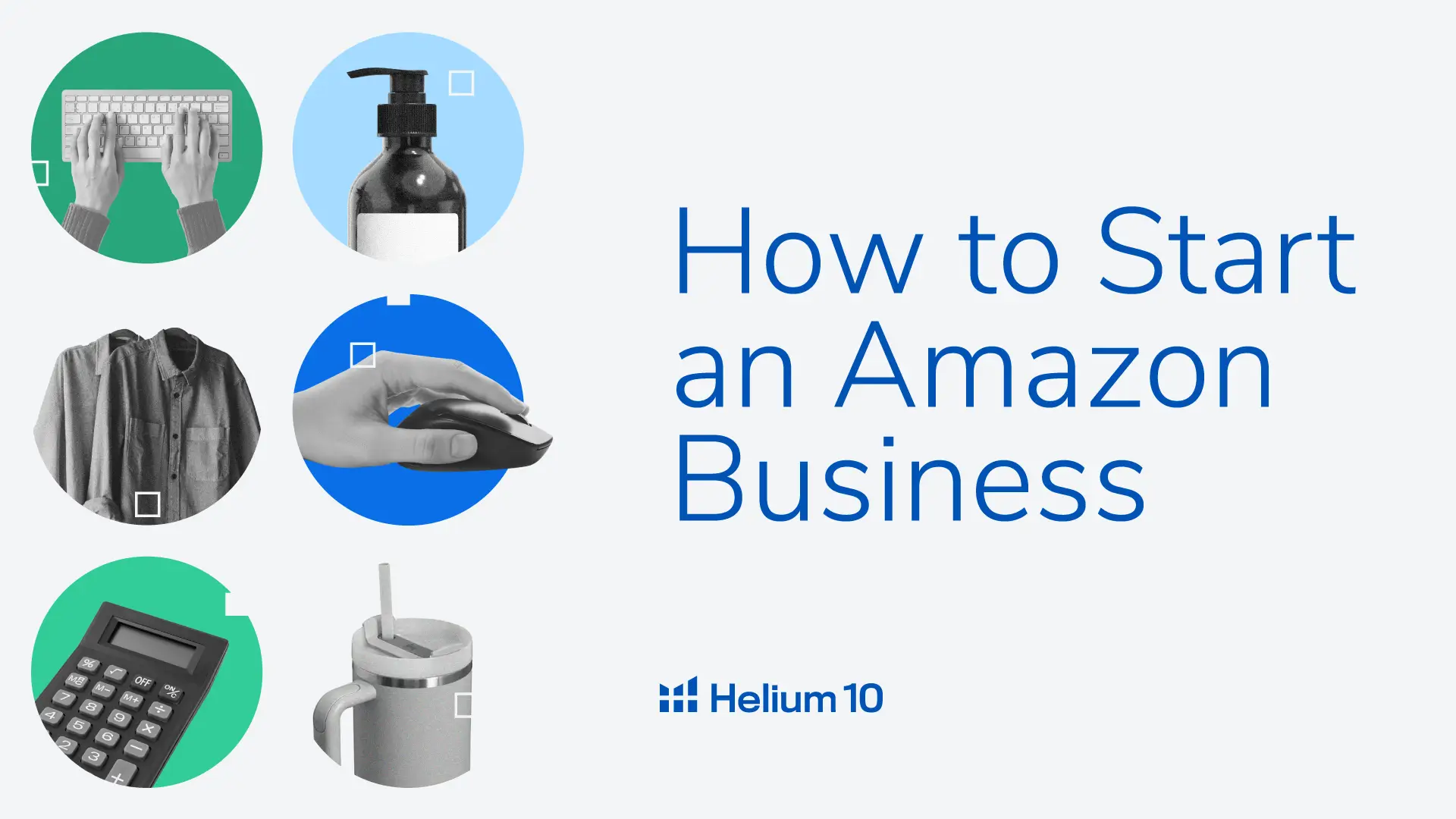
How to Start an Amazon Business: 7 Easy Steps


Table of Contents
- Introduction
- Pros of Starting an Amazon Business
- Cons of Starting an Amazon Business
- 7 Steps to Start an Amazon Business
- Step 1: Select Your Amazon Business Model
- Retail and Online Arbitrage
- Dropshipping
- Wholesale
- FBA Private Label
- Step 2. Perform Amazon Product Research
- Find Products Using Helium 10’s Black Box
- Step 3. Source Your Amazon Product
- Find Suppliers on Alibaba
- 5 Things to Do After Finding an Amazon Supplier
- Prioritize Negotiating Favorable Rates
- Leverage Multiple Supplier Conversations
- Conduct Thorough Research on Materials and Manufacturing Processes
- Order Samples from Selected Manufacturers
- Evaluate Sample Performance and Resilience
- Ship Your Products to an Amazon Fulfillment Center
- Step 4. Create an Amazon Seller Account
- What Documents Do You Need?
- Step 5. Create Amazon Product Listings
- Step 6. Price Your Amazon Products
- Step 7. Advertise Your Products
- Amazon Branding
- Market Your Amazon Product
- Gather Product Reviews
- Create Winning Amazon Listings Using Listing Builder
Introduction
At first glance, the Amazon marketplace might seem oversaturated and too competitive for new sellers to find success. However, the reality is that determined entrepreneurs—even those just starting out from their homes—can still make a lucrative business by selling on Amazon’s platform.
Whether you’re an experienced e-commerce pro or a total newcomer considering leaving your 9-to-5 job behind, Amazon provides ample opportunities to generate both active and passive income. By leveraging the strategies outlined in this comprehensive guide, you’ll gain valuable insights into launching and optimizing your own thriving Amazon business venture.

Outclass Your Competitors
Achieve More Results in Less Time
Maximize your results and drive success faster with Helium 10’s full suite of Amazon and Walmart solutions.
Sign Up for FreePros of Starting an Amazon Business
Embarking on an Amazon business journey has never been more accessible or rewarding. The process kickstarts with establishing an Amazon seller account—a straightforward task that almost anyone can complete by furnishing a few essential details. Aside from basic information like a bank account, government ID, credit card, phone number, and tax documentation, there’s little else required.
What truly sets the Amazon selling experience apart is its user-friendly nature. The account setup process guides you intuitively through each step, prompting you to provide the necessary information along the way. Remarkably, you won’t even need to construct a separate e-commerce website, as your seller account automatically comes equipped with an Amazon storefront.
Identifying best selling Amazon products is equally streamlined. Powerful sales analytics tools like Helium 10 empower you to pinpoint the most promising products and evaluate their profit potential with precision. This data-driven approach ensures you can make informed decisions from the outset.
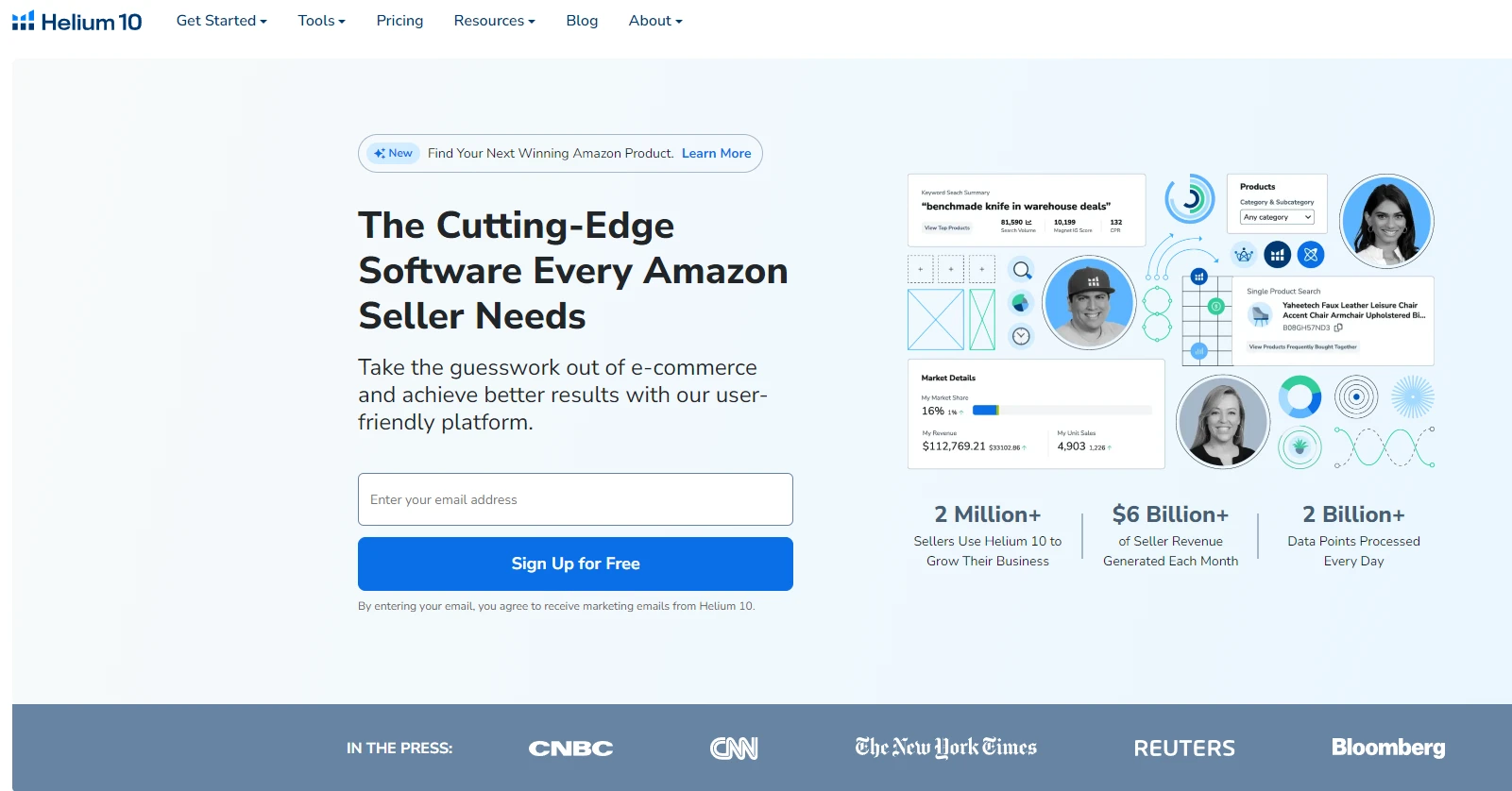
Perhaps the most compelling aspect is the Amazon FBA (Fulfilled by Amazon) program, which relieves you of the complexities of order fulfillment. By leveraging FBA, Amazon deftly handles the picking, packing, shipping, and even customer service for your products. This invaluable service allows you to dedicate your undivided attention to driving other critical business functions forward.
Cons of Starting an Amazon Business
While establishing an Amazon business is undoubtedly accessible, sustaining consistent sales volume to maintain adequate cash flow can pose a formidable challenge. This hurdle is further exacerbated by Amazon’s bi-weekly payout schedule, which can make inventory replenishment problematic if you rely solely on sales revenue to cover costs. This could be a reason why some are choosing to sell on Amazon without inventory.
Another potential obstacle is the sheer intensity of competition within the Amazon marketplace. With over eight million active sellers vying for customer attention, penetrating the market and capturing a loyal following can be an uphill battle. This cutthroat environment often precipitates price wars, with some sellers even willing to operate at a loss temporarily to accumulate customer reviews before raising prices – a counterproductive strategy that undermines the ecosystem.
Moreover, as an Amazon seller, you are effectively at the mercy of the brand itself. While Amazon’s stringent regulations generally benefit both merchants and customers, inadvertently breaching the company’s rules could result in account suspension. Furthermore, Amazon retains the right to modify its policies at any given moment, leaving sellers with little recourse.
Despite these challenges, the potential rewards of operating an Amazon business make it a worthwhile endeavor for those prepared to take the leap. If you find yourself ready to set sail on this journey, the following guidelines will serve as a comprehensive roadmap for setting up your Amazon business venture.
7 Steps to Start an Amazon Business
Step 1: Select Your Amazon Business Model
As a budding seller on Amazon, you’ll have the opportunity to choose from four prevalent business models, each offering its unique advantages and considerations. This flexibility allows you to find the optimal fit that aligns with your goals, resources, and preferences.
Retail and Online Arbitrage
Requiring a startup investment of approximately $100-$500, arbitrage (both the retail and online varieties) involves sourcing discounted products online or through physical retail outlets and reselling them at a profit. Sellers can leverage the Amazon Seller app on their smartphones to conveniently scan products and instantly assess their potential for generating short-term profits.
Dropshipping
With a virtually non-existent initial cost, dropshipping entails outsourcing 100% of your product management responsibilities to a third-party company. This partner handles inventory management, shipments, and storage, leaving you solely responsible for driving sales. Many dropshipping suppliers offer free trial periods, though you’ll need to pay to continue using their services once the complimentary period concludes.
Wholesale
Requiring an upfront investment of $1,000 or more, the Amazon wholesale model involves purchasing products in bulk from established brands and reselling them at a higher price without offering discounts, thereby generating profit. However, this approach necessitates a substantial initial outlay for bulk inventory, and you’ll still need to work diligently to outcompete other sellers.
FBA Private Label
With a minimum startup cost of $3,000, private label sellers procure products from third-party manufacturers and brand them with their unique label. These brand owners can take a product idea from concept to fruition, often trademarking it to prevent other sellers from encroaching on their market.
Step 2. Perform Amazon Product Research
When starting on Amazon, comprehensive research emerges as an indispensable component of the process. With Amazon’s vast marketplace spanning over 25,000 product niches, the opportunities are boundless. However, to truly excel and identify the top-selling gems within your chosen niche, a meticulous and focused product research approach is paramount.
Here are some steps when choosing products.
Find Products Using Helium 10’s Black Box
- Sign up for Helium 10 and open Black Box
- Set your product criteria
Here are some common criteria to consider when searching for successful products:
- Product prices ranging from $15 to $100
- In-demand items with at least 300 monthly sales
- Small and lightweight items to minimize shipping costs
- Low competition (for private-label products, focus on subcategories with fewer reviews)
- Relatively low number of sellers (for dropshipping, arbitrage, or wholesale models, it’s advisable to target products with fewer than 20 sellers)
You can also leverage this product finder tool’s pre-configured options for more proven results.
- Unveil potential opportunities
Click “Search” to populate your search results.
- Curate your product portfolio
Select products that align with your passions and interests.

Step 3. Source Your Amazon Product
After curating your list of potential products, it’s time to identify and secure Amazon providers. The approach you take will depend on your chosen sales strategy.
- Wholesalers need to establish connections with reputable wholesale distributors to find the right fit. You’ll need to engage in negotiations to secure the most advantageous deal for both parties. It’s important to note that wholesalers are often discerning when selecting sellers, so newcomers may need to provide a comprehensive business plan to increase their chances of success.
- Dropshipping suppliers operate online, making it relatively straightforward to locate them through a simple Google search. Many well-established dropshipping suppliers, like Alibaba, have proven track records. However, if you opt for a smaller provider, it’s crucial to thoroughly research their reputation before engaging their services.
- Online and retail arbitrage specialists don’t always work directly with suppliers. However, some online arbitrage specialists resell products sourced from platforms like Alibaba. Retail arbitrage specialists typically procure inventory from local brick-and-mortar stores offering substantial sales or discounts.
- For private label sellers, there are two primary options: partnering with local manufacturers or seeking out private label manufacturers online. One popular option is to utilize the largest private-label manufacturing platform, Alibaba, which facilitates the importation of goods from overseas manufacturers.
Find Suppliers on Alibaba
Alibaba and AliExpress are invaluable resources for sourcing cost-effective, high-quality manufacturers. Moreover, its seamless integration with Helium 10 makes it a natural fit for your product-sourcing endeavors.
Here are a few ways you can leverage Helium 10 to identify suppliers on Alibaba:
- Discover products using the Helium 10 Chrome Extension.
- Select the ‘Alibaba’ button within the Xray feature of the Chrome Extension.
- On Alibaba.com, initiate contact by clicking ‘Contact Supplier.’
This will enable you to engage in direct communication with suppliers, discussing the specifics of procuring their products.
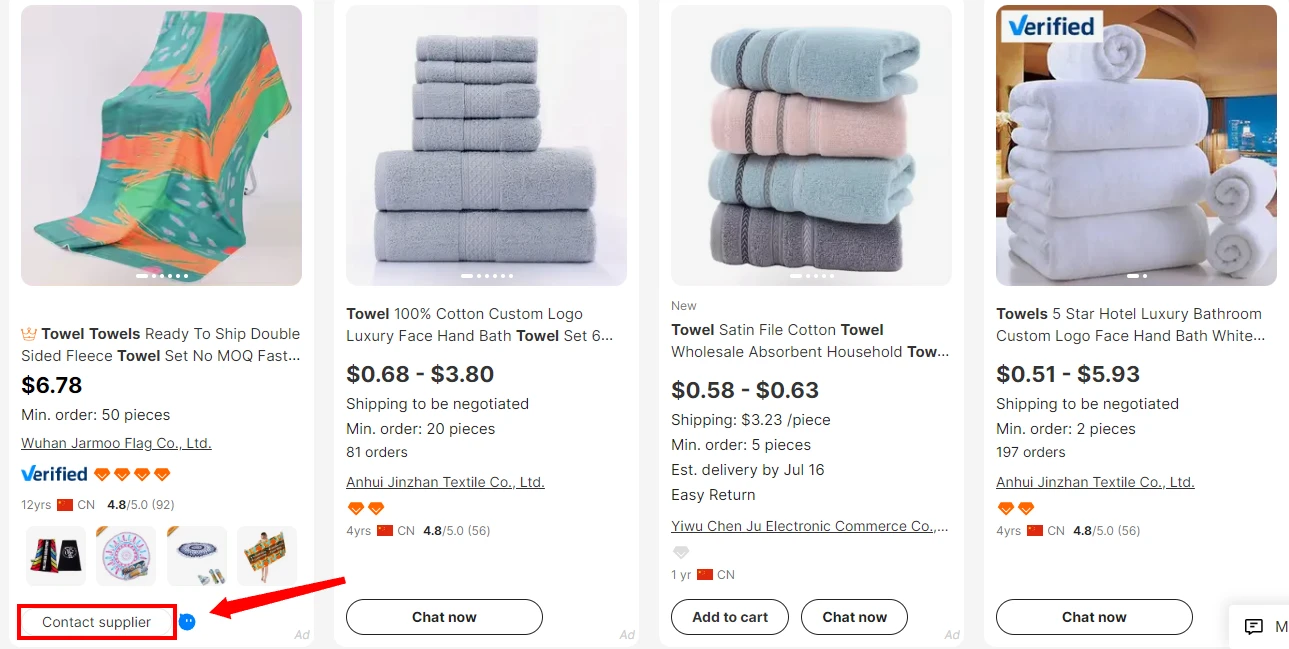
Beyond the Helium 10 integration, Alibaba’s comprehensive website also presents a wealth of opportunities to uncover private-label products. The built-in search engine empowers you to filter manufacturers based on location (spanning China and India), cost, and product sales performance, ensuring you can make informed decisions aligned with your sourcing requirements.
5 Things to Do After Finding an Amazon Supplier
While it may be tempting to dive straight into selling after finding a few promising suppliers, a more prudent approach is to focus on securing the most advantageous rates. Here are five essential steps to take:
Prioritize Negotiating Favorable Rates
Rather than immediately shifting your attention to selling, concentrate your efforts on negotiating the best possible rates with potential suppliers.
Leverage Multiple Supplier Conversations
Engaging with multiple suppliers will provide you with invaluable insights into manufacturing costs, granting you leverage during rate negotiations.
Conduct Thorough Research on Materials and Manufacturing Processes
Comprehensive research into the materials and manufacturing processes employed will ensure transparency and maintain quality standards.
Order Samples from Selected Manufacturers
Obtaining samples from your shortlisted manufacturers allows you to thoroughly assess the product’s quality, durability, and overall integrity.
Evaluate Sample Performance and Resilience
Ensure that the samples not only survive the rigors of overseas shipping but also withstand regular use, maintain their appearance, and meet all necessary safety standards.
Ship Your Products to an Amazon Fulfillment Center
If you’ve decided to pursue the Fulfillment by Amazon (FBA) route, your next step is to ship your products to a nearby Amazon fulfillment center. These strategically located facilities are where Amazon will handle the storage, picking, packing, and shipping of your goods, allowing you to concentrate your efforts on marketing and product research initiatives.
FBA sellers enjoy significant advantages over their non-FBA counterparts, also known as Fulfillment by Merchant (FBM) sellers. Typically, they benefit from faster shipping times, increased sales, and enhanced visibility on the Amazon platform. However, it’s important to note that these advantages come at the cost of additional FBA fees.
Alternatively, if you choose to operate as an FBM seller, handling fulfillment independently, you’ll need to contend with the complexities of storage, order processing, and potentially hiring additional staff to manage these duties. Renting a storage facility or warehouse can quickly become a significant expense.
This brings us to a crucial consideration when selecting your supplier: finding one with expertise in Amazon’s fulfillment processes. Amazon’s fulfillment centers have stringent requirements, and partnering with a knowledgeable supplier can help you avoid shipping delays, product returns, and potential rejections due to non-compliance with Amazon’s guidelines.
Step 4. Create an Amazon Seller Account
It’s crucial to have a clear understanding of what you intend to sell before setting up your Amazon seller account. The account creation process itself is relatively straightforward, yet it demands attention to detail.
To initiate the process, sign up for an Amazon.com account. You have the option to use your existing shopping account as a starting point if you prefer.
Next, you’ll be prompted to provide some basic personal information. While you can link your seller account to an existing business entity if desired, Amazon does not require you to have a formal business structure to become a seller on their platform.
What Documents Do You Need?
Amazon requires you to provide a valid photo ID, a payment card for making payments, and a means to connect your bank account in orde to receive payments. During this step, you may be asked to provide Amazon with a copy of your most recent bank statement.
Additionally, Amazon will require you to complete two extra steps. The first is a video interview where you’ll be asked to present your photo ID and, potentially, a bank statement once again.
Next, you’ll receive a postcard containing a verification code associated with your physical address. Entering this code into your incomplete seller account will allow you to verify your account.
Afterward, you can commence selling by choosing one of two available selling plans:
- The individual plan. This plan comes with no monthly fee, but a $0.99 charge is applied per unit sold. It also offers limited access to Amazon’s advertising tools. While suitable for personal selling, it may not be the optimal choice for professional-level operations.
- The professional plan. This plan carries a $39.99 monthly fee but does not impose a per-unit sales fee. It grants you access to more advanced selling tools and unique Amazon programs (such as Amazon Handmade or Product Launchpad).
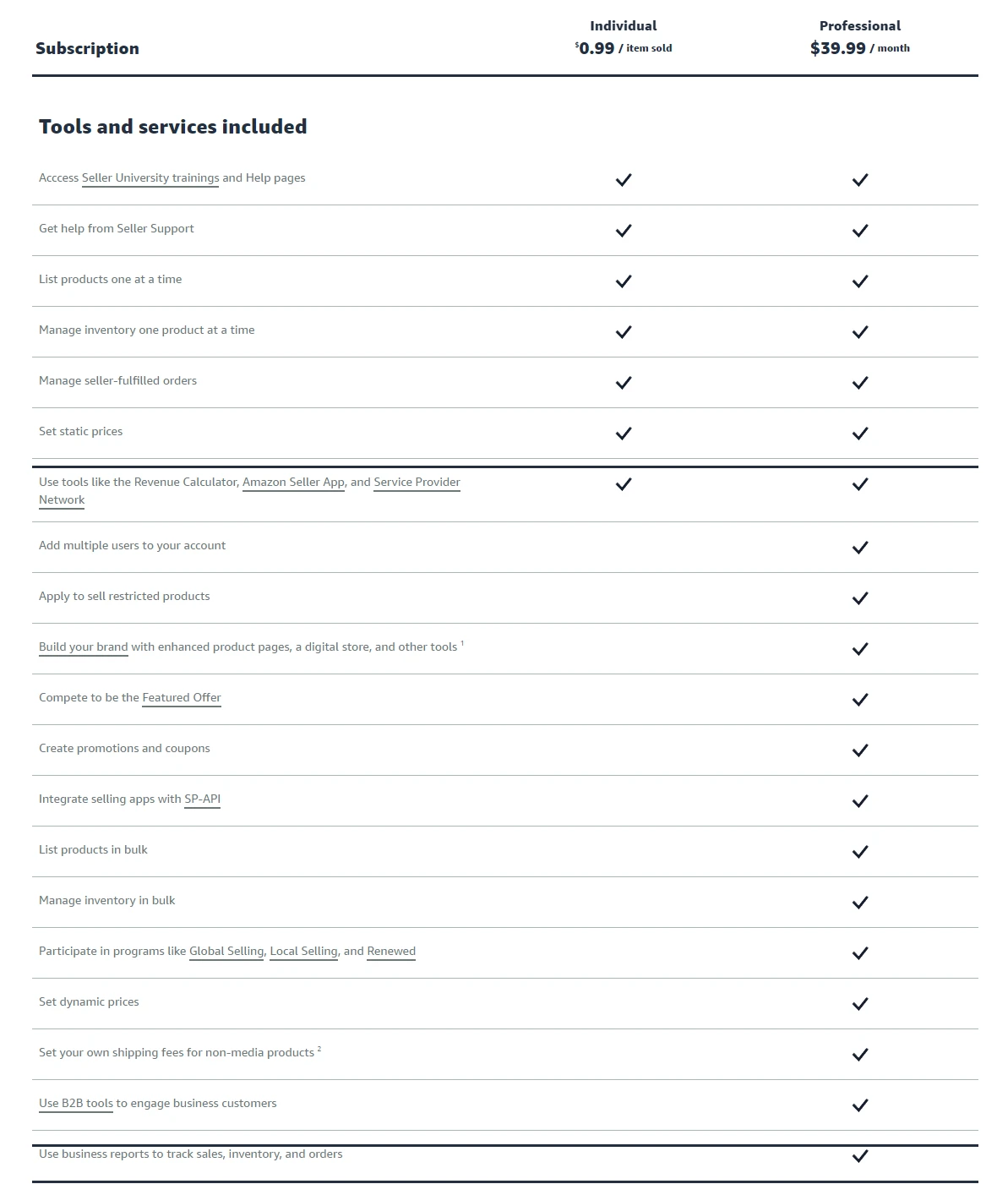
Also, if you anticipate selling more than 40 products, the Professional Plan is likely the better option. Alternatively, you can test it out for a month to evaluate the additional tools before making a long-term commitment.
Once you’ve selected your plan and finalized your account setup, you can proceed to list your products for sale.
Step 5. Create Amazon Product Listings
Creating your inaugural Amazon product listing marks an exhilarating milestone in your entrepreneurial journey. However, it’s imperative to approach this endeavor with a meticulous mindset, resisting the temptation to allow excitement to overshadow sound judgment.
Optimizing your listings is a critical component of success, often referred to as “listing optimization” – a fancy term that simply translates to “enhancing the effectiveness of your product presentation.”
While foundational elements like high-quality product imagery, captivating titles, and impeccable grammar are non-negotiable, another pivotal aspect of the optimization process lies in strategic keyword research and thoughtful implementation.
Note: If you’re offering an existing product, you can bypass this step. However, for private label sellers, keyword research and implementation are indispensable. Other sellers may or may not need to undertake this process, depending on their unique circumstances.
Keywords are the terms potential customers input into Amazon’s search engine to uncover products like yours. While Amazon’s native PPC tool can suggest some keywords, it’s not designed for comprehensive optimization, as Amazon doesn’t disclose data on how other sellers approach this critical task.
To gain invaluable insights into your competitors’ strategies, Helium 10’s Cerebro tool emerges as a powerful ally. Here’s how you can leverage its capabilities:
1. Locate the ASIN (Amazon Standard Identification Number) on your competitor’s product page.
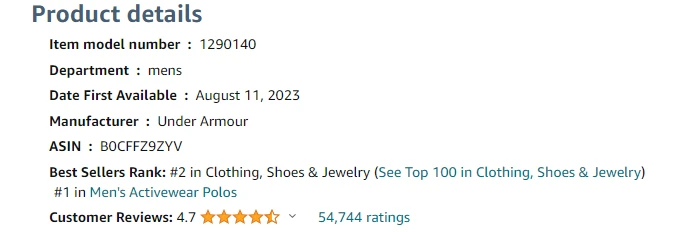
2. Enter the ASIN into Cerebro’s search bar.
3. Specify your desired keyword filters or leave them blank to encompass all possibilities.
4. For best results, select your preferred search volume range by targeting either high or low-competition options based on your goals.

5. Unveil your tailored keyword results.
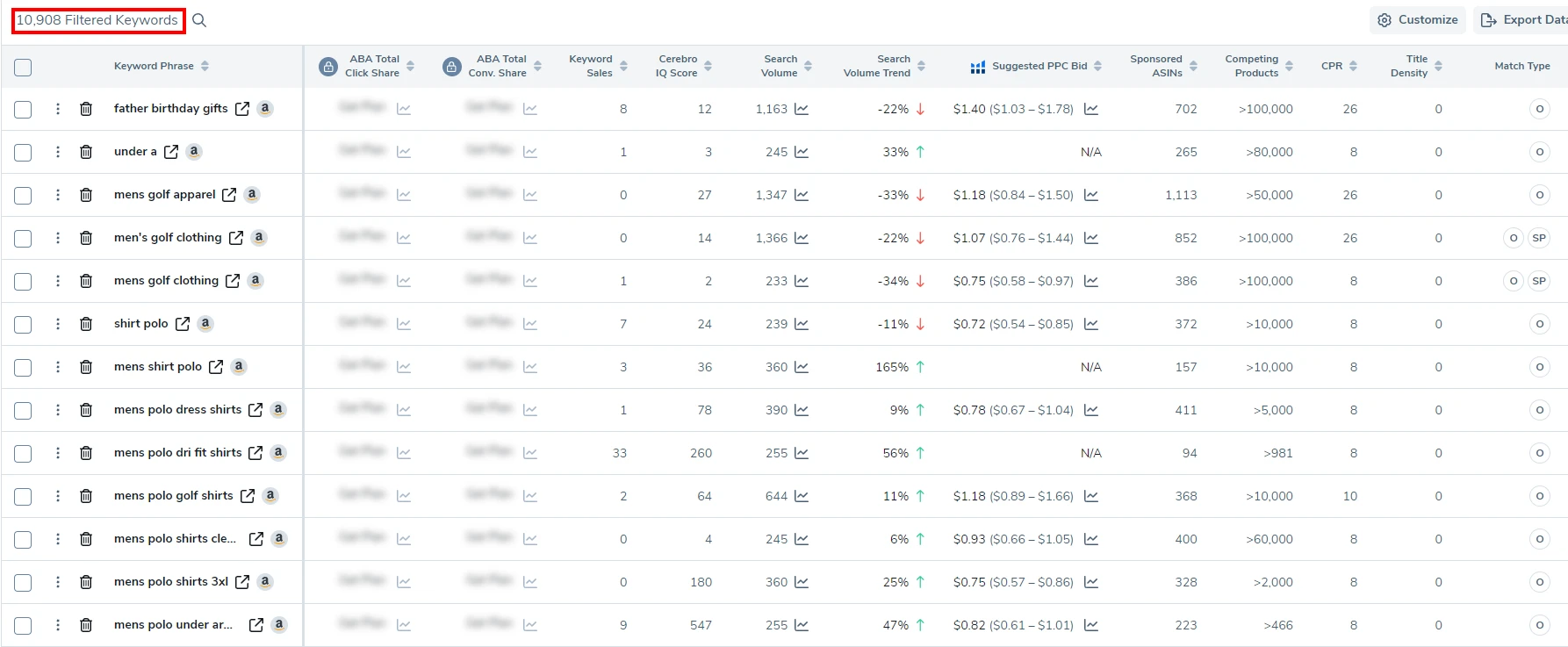
Longer, more descriptive keywords—often referred to as long-tail keywords—are typically better suited for painting a vivid picture of your product. The more words a keyword contains, the more specific and nuanced it becomes, a concept known as “keyword relevancy.” This ensures your chosen keyword accurately captures the essence of the product you’re offering.
Additionally, long-tail keywords tend to have lower levels of competition, as fewer sellers have descriptions that are granular. And, as a bonus, these longer keywords inherently encompass shorter, punchier variations, granting you the potential to rank for both long-tail and short-tail keywords simultaneously.
Step 6. Price Your Amazon Products
When it comes to pricing Amazon products, your primary consideration should be your desired profit margin. To ensure you set appropriate targets, it’s crucial to account for all associated expenses meticulously. Don’t overlook factors like FBA fees, Amazon referral fees, storage costs, and any other incurred expenses – no matter how seemingly minor.
To make your business venture truly worthwhile, you should aim for a profit margin within the range of 25% to 30%. This range strikes a balance between profitability and remaining competitive in the marketplace.
Leveraging Helium 10’s powerful tools, you can gain insights into your product’s average selling price on Amazon. Armed with this data, you can determine your maximum pricing threshold. Conversely, your minimum price should reflect the bare minimum you need to break even after factoring in all associated costs.
By striking the right balance between your maximum and minimum price points using a profitability calculator—all the while keeping your target profit margin in mind—you can position your products for success in the competitive Amazon arena.
Step 7. Advertise Your Products
Amazon Branding
Many manufacturers offer white-label opportunities, enabling you to brand the products with your unique logo or label. This presents an excellent opportunity to differentiate yourself from competitors and establish a distinct brand identity.
Additionally, consider branding the product packaging itself with your logo. Many manufacturers offer this flexible customization option at little to no extra cost.
Market Your Amazon Product
The ideal starting point for marketing your Amazon business is through Amazon’s native advertising platform. This method of advertising on Amazon typically offers decent conversion rates, making it an effective investment. If your advertising budget is modest initially, start small and gradually scale your ad campaigns as your business and revenue streams grow.
Other advertising avenues worth exploring include Pay-Per-Click (PPC) campaigns and social media advertising. You could also establish a blog and strategically feature your Amazon products within its content. Platforms like HubSpot offer user-friendly, free blog tools to help you get started.
Gather Product Reviews
Product reviews are invaluable assets for building credibility and trust within the Amazon marketplace. Consider including product inserts that politely request customers to review your offerings or incorporate review prompts within order confirmation emails. However, you may need to incentivize customers to leave reviews by offering small discounts on future purchases or other value-added incentives.
Additionally, leveraging social media platforms like Twitter, Facebook, and TikTok Shop can be an effective way to solicit external product reviews from your customer base.
Create Winning Amazon Listings Using Listing Builder
To achieve maximum impact, merely searching for keywords is insufficient – you must also meticulously craft your listing to optimize its effectiveness. In the following steps, we’ll guide you through the process of preparing an optimal listing for your product.
Step 1: Curate Keyword Groups
1. Launch the Helium 10 Listing Builder.
2. Select the blue “Add a Listing” button in the top-right of the screen.

Step 2: Composing and Reviewing Your Listing with the Helium 10 Listing Builder
1. Enter your listing data across the following sections:
- Product title
- Five bullet points
- Description
- Generic keywords (backend keywords)
If you’re uncertain about how to craft the textual elements of your listing, you can harness the built-in AI tool, which will generate everything for you using the keywords you entered in the previous step.
2. Strategically intersperse your chosen keywords throughout these sections.
3. As you incorporate selected keywords into your listing, they will be crossed out from the general list, helping you maintain focus on the remaining keywords.

4. Explore the “Listing Analysis” section to automatically analyze your text for any necessary corrections or improvements.
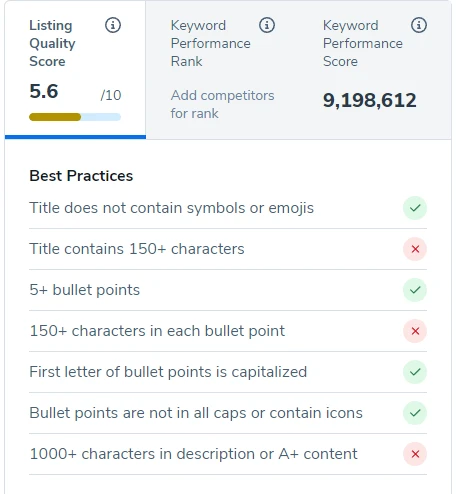
5. Once all essential fields are completed, click “Finish” to preserve your finalized listing.
By leveraging the power of Helium 10’s Listing Builder, you’ll be equipped to craft meticulously optimized Amazon listings that captivate your audience and drive conversions.
Frequently Asked Questions
Achieve More Results in Less Time
Accelerate the Growth of Your Business, Brand or Agency
Maximize your results and drive success faster with Helium 10’s full suite of Amazon and Walmart solutions.

